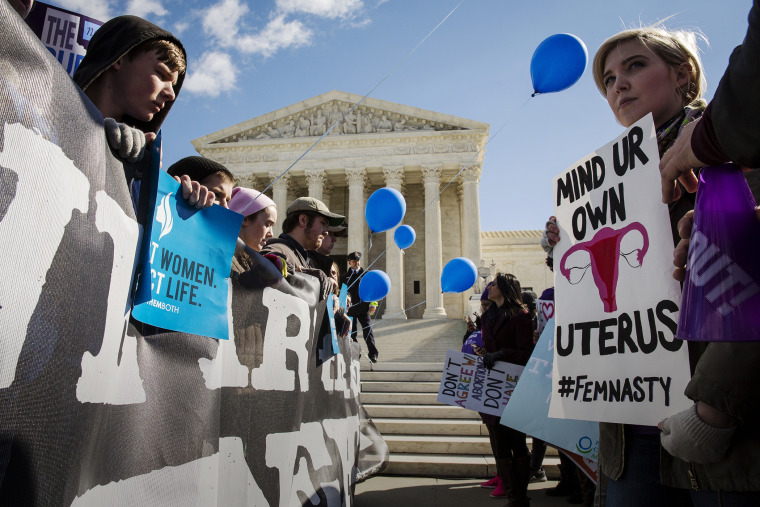Like all health care appointments, abortion clinic visits often require taking time off school or work and can result in additional costs like lost wages, travel expenses and child care that many women struggle to afford. This is especially true in Texas, where most women are required to make at least two trips to a clinic due to a state-mandated, in-person clinic visit at least 24 hours before obtaining an abortion. To make matters worse, more than half of the state’s abortion facilities closed following the broad-sweeping restrictions on abortion services imposed by the 2013 law known as HB 2 — resulting in increased travel distances and longer waits for an appointment.
Research we have conducted as part of the Texas Policy Evaluation Project (TxPEP) has demonstrated how difficult it can be for women to navigate the logistics of a nearby clinic closing. One woman we spoke to described the ordeal this way:
“We didn't know how long it was going to take, 'cause we can drive four hours over there, do the procedure and then drive four hours back, but we didn't know how I was going feel … we didn't want to be on the road … Before you could just go to [the nearby town]. It wasn't so far away, and you could come back to your home and be comfortable … but since we lived so far away … we didn't have a choice.”
A new TxPEP study published in The American Journal of Public Health has been able to quantify some of the impact that clinic closures in Texas have on women. The study surveyed over 400 Texas women seeking abortions in 2014 and compared the burdens experienced by women whose nearest clinic closed after HB 2 to women whose nearest clinic remained open.
RELATED: Shuttered: the end of abortion access in red America
One of the most important findings from our study was the increased travel burden that women faced when their closest clinic closed. The average distance that women in our study traveled to a clinic if their nearest clinic had closed was 85 miles each way — nearly four times as far than the 22 miles that Texas women traveled when their nearest clinic remained open. To put that into context, just last year, a bipartisan group in Congress fought to reduce barriers to health care by ensuring that the Department of Veterans Affairs (VA) allows veterans to seek care at private facilities if they lived more than 40 miles from a VA facility — recognizing that long distances to health care impose access barriers starting at less than half the average distance that women traveled in our study if their nearest clinic had closed.
In addition to the travel burden, women had additional costs. Compared to women whose nearest clinic stayed open, significantly more women whose nearest clinic closed had to stay somewhere overnight, spent more than $100 (not including costs of the abortion itself) and said it was difficult to get to the clinic.
For women who are struggling just to make ends meet and care for their families, these additional burdens may mean the difference between being able to obtain the health care they need or not. It is worth noting that, in our study, we surveyed women who had successfully made it to a clinic for care. Because our sample was clinic-based, we did not learn what happened to women for whom the burdens were so great that they were unable to access abortion care at all. But evidence from our other research in Texas demonstrates that some women who faced increased travel distances did not get the abortion they wanted, while others considered taking matters into their own hands. One woman told us:
“I called Dallas, I called San Antonio. I think in Austin and here in Waco they weren't doing nothing, and they said they didn't have a surgeon or a doctor for that here. They used to have one. I don't know what happened but they didn't have one at the time. I also did look at ways that I could do it myself at home…”
The Supreme Court will soon decide Whole Woman’s Health vs. Hellerstedt, a case concerning the constitutionality of two provisions in HB 2 that led to many of the clinic closures in Texas. The implications of how the Supreme Court rules in this case cannot be understated.
If the law is upheld, the number of abortion clinics in Texas will be reduced to 10, at most. Were that to happen, the burdens imposed upon women — including delays that push women from the first into the second trimester of pregnancy, or past legal eligibility for abortion in the state altogether — would be potentially more severe. And it won’t stop with Texas. State legislatures imposed 57 different abortion restrictions in 2015 alone, and still others are poised to enact a near carbon copy of the Texas law if it is deemed constitutional — a process which would severely limit access to reproductive health care and impose undue burdens on tens of millions of women across the country.
Caitlin Gerdts, Ph.D, MHS, is an epidemiologist, and a senior associate with Ibis Reproductive Health.
